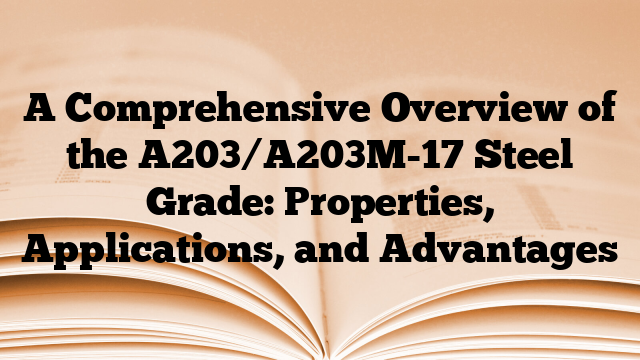A203/A203M-17 is a standard specification for pressure vessel plates made of alloy steel, particularly nickel alloy steel. It specifies the chemical composition, mechanical properties, and other relevant requirements for these plates.
The chemical composition of A203/A203M-17 steel grade consists of elements like carbon, manganese, silicon, nickel, molybdenum, and copper. The maximum carbon content is 0.20%, and the maximum manganese content is 0.70%. Silicon is limited to 0.15-0.40%, while nickel is present in a range of 3.25-3.75%. The addition of molybdenum and copper enhances the steel’s mechanical properties.
In terms of mechanical properties, A203/A203M-17 steel grade has a minimum yield strength of 275 MPa (40 ksi) and a minimum tensile strength of 485 MPa (70 ksi). It also possesses good notch toughness, making it suitable for low-temperature service.
The A203/A203M-17 steel grade is commonly used in the fabrication of pressure vessels for various industries, including oil and gas, petrochemical, and power generation. Its high strength and excellent corrosion resistance make it suitable for storing and transporting substances under high-pressure conditions.
Advantages of A203/A203M-17 steel grade include its good weldability, formability, and impact resistance. It can be easily formed and welded without any significant loss in strength or toughness. Its high-temperature strength and resistance to oxidation also make it suitable for applications in elevated temperature environments.
In conclusion, A203/A203M-17 is a standard specification for pressure vessel plates made of alloy steel. It offers a good combination of mechanical properties, chemical composition, and other advantages that make it suitable for various industrial applications.

